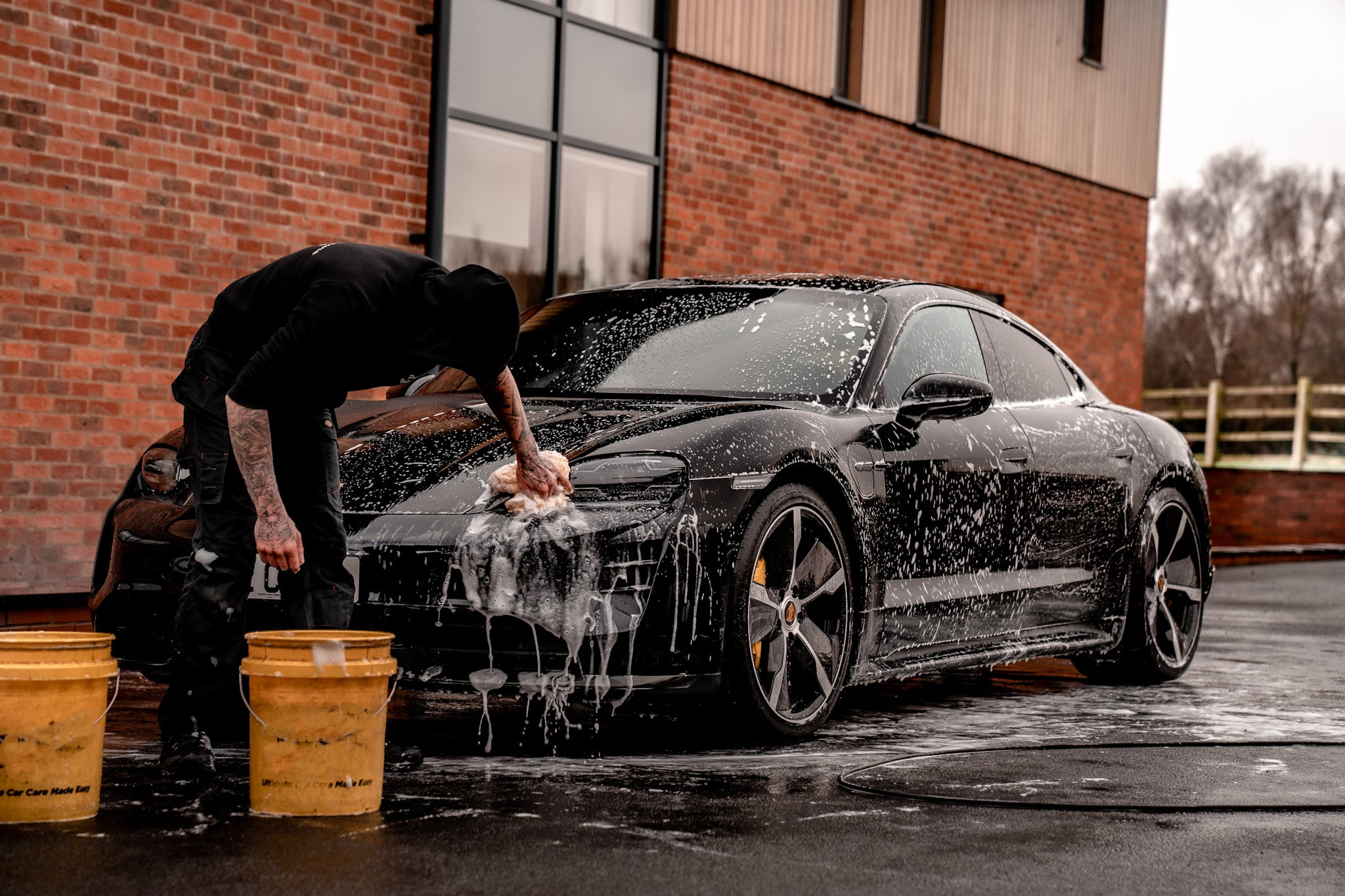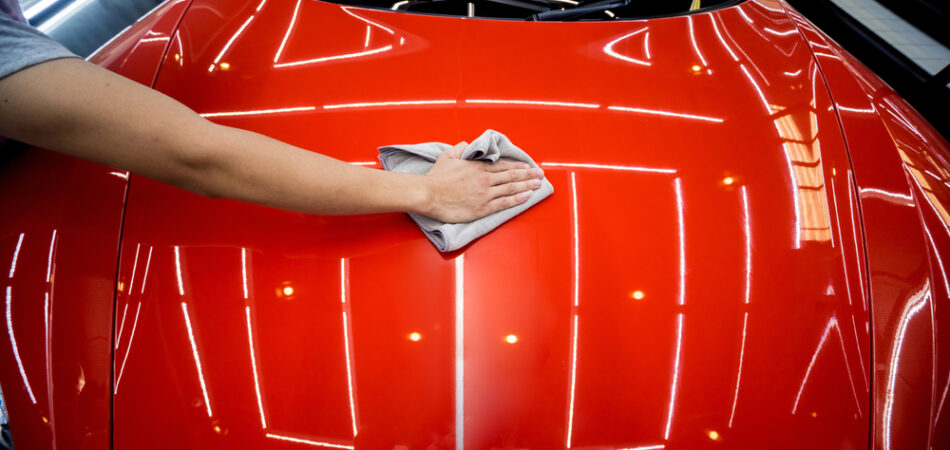Top Notch Ceramic Coatings San Jose for a Perfect Finish
Top Notch Ceramic Coatings San Jose for a Perfect Finish
Blog Article
Unveiling the Science Behind Ceramic Coatings: How Does It Job and Why Is It Superior to Standard Alternatives?
Ceramic finishings have actually been gaining popularity in different sectors for their phenomenal efficiency and sturdiness. The scientific research behind these finishings surpasses simple surface area security, diving into the intricate chemistry that makes them attract attention from typical options (ceramic coatings san jose). Recognizing just how ceramic finishings work and why they outshine conventional choices is critical for those seeking to boost the long life and strength of their materials. So, exactly what sets ceramic finishings apart, and exactly how do they achieve such remarkable outcomes?
The Chemistry of Ceramic Coatings
In recognizing ceramic coverings, diving into the elaborate chemistry behind their make-up is essential for understanding their performance and longevity. Ceramic finishes are mainly made up of silicon dioxide (SiO2), which forms a solid and safety layer when used to different surface areas. This chemical framework supplies remarkable resistance to heat, chemicals, and deterioration, making ceramic coatings extremely demanded for a variety of applications.
The chemistry behind ceramic coatings involves the formation of covalent bonds between silicon and oxygen atoms, developing an inflexible network that improves the covering's toughness and durability. In addition, the existence of various other components such as aluminum, zirconium, and titanium further improves the coating's properties, providing enhanced hardness and attachment to surfaces.
Understanding the chemical structure of ceramic layers enables the personalization of formulas to fit certain requirements, whether it be for vehicle, industrial, or domestic purposes. By taking advantage of the power of chemistry, ceramic coverings proceed to pave the way for premium protection and efficiency in numerous markets.
Advantages of Ceramic Coatings

As an outcome, ceramic finishings make cleaning and preserving surfaces a lot simpler and less taxing. Overall, the wide variety of benefits offered by ceramic coverings make them a superior option contrasted to traditional finish techniques.
Exactly How Ceramic Coatings Bond
Ceramic layers bond to surfaces with a procedure that involves molecular adhesion and chemical interactions. When a ceramic finish is related to a surface area, it forms a solid bond by chemically adhering to the surface at a molecular level. This bond is created through the formation of covalent bonds, which are durable and exceptionally strong. The ceramic finish's molecules permeate the pores of the surface area, producing a tight hold that resists separation.
Moreover, the chemical communications in between the ceramic covering and the surface better boost the bond. ceramic coatings san jose. These interactions allow the ceramic covering to produce a constant and seamless layer on the surface, providing excellent protection and resilience. Unlike standard coverings that might remain on the surface without completely bonding, ceramic layers create an irreversible bond that is resistant to chemicals, UV rays, and harsh ecological problems

Fundamentally, the bonding mechanism of ceramic coatings ensures a effective and lasting protective layer that outperforms traditional finishing choices. This premium bond contributes to the sturdiness, scrape resistance, and durability of ceramic coverings, making them a favored option for different applications.
Toughness of Ceramic Coatings
The remarkable durability of ceramic layers stems from their robust molecular adhesion and chemical interactions with surfaces, making sure a long lasting protective layer that exceeds traditional coating alternatives. As soon as used, ceramic coverings create a solid bond with the substrate, creating a durable barrier against various environmental stress factors such as UV radiation, chemicals, and abrasions. This bond is so secure that it can endure the rigors of day-to-day usage without degrading or degrading promptly.
Unlike conventional finishes that might deteriorate over time, ceramic coverings maintain their stability for an extended duration, providing lasting protection for the underlying surface area. Overall, the remarkable longevity of ceramic finishings makes them a premium choice for safeguarding a large array of surface areas in different applications.
Ceramic Coatings Vs. Conventional Options
In comparison to conventional finishing methods, ceramic layers provide a distinct mix of toughness and safety abilities that set them apart in numerous surface area protection applications. Typical alternatives such as wax or sealers offer a check here temporary layer of defense that can subside promptly, needing frequent reapplication. On the other hand, ceramic coverings develop a strong bond with the surface, developing a semi-permanent or permanent barrier that is highly immune to abrasion, chemicals, UV rays, and severe temperatures.
Additionally, ceramic coatings provide remarkable hydrophobic residential properties contrasted to conventional layers. The hydrophobic nature of ceramic finishings creates water to bead up and roll off the surface area, carrying dirt and contaminants with it. This self-cleaning impact assists to keep the surface area's sanitation and gloss for prolonged periods, lowering the requirement for constant maintenance.
In addition, ceramic layers have a thicker layer contrasted to standard choices, providing enhanced scratch resistance and protection versus small influences. This longevity guarantees lasting performance and helps preserve the aesthetic appeal of the dealt with surface area for an extensive period.
Verdict
Finally, the science behind ceramic finishings hinges on their chemical composition and bonding properties, making them above traditional options. The advantages of ceramic coatings include raised resilience and defense for surfaces. By understanding how ceramic finishes job and their benefits over typical alternatives, one can make enlightened decisions when taking into consideration coating options why not find out more for various applications.
Unlike conventional coverings that might sit on the surface without totally bonding, ceramic finishings develop a long-term bond that is resistant to chemicals, UV rays, and severe environmental conditions.
The extraordinary long life of ceramic coatings stems from their durable molecular bond and chemical interactions with surfaces, making certain a resilient protective layer that goes beyond standard finishing alternatives.Unlike traditional finishes that might weaken over time, ceramic layers preserve their stability for an extended period, providing long-lasting defense for the underlying surface.In comparison to standard finishing techniques, ceramic finishings supply a distinct blend of longevity and safety capabilities that set them apart in different surface area defense applications. By comprehending just how ceramic finishings job and their benefits over typical options, one Find Out More can make enlightened choices when considering layer choices for numerous applications.
Report this page